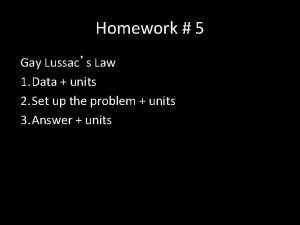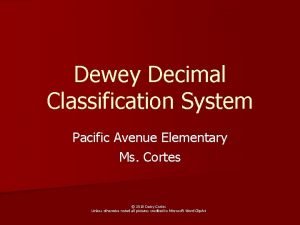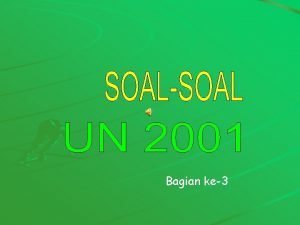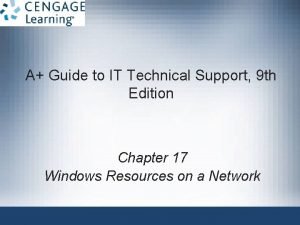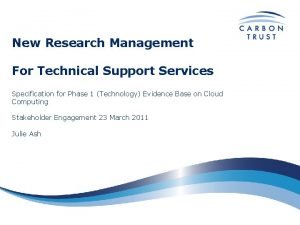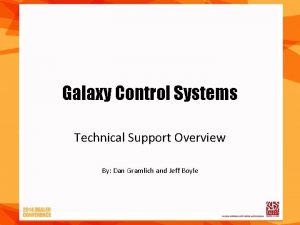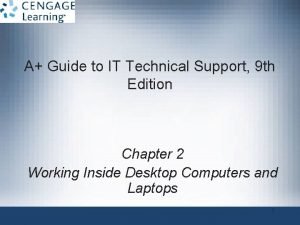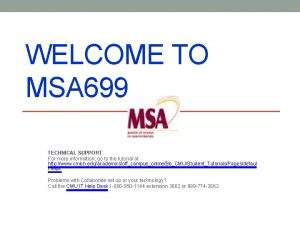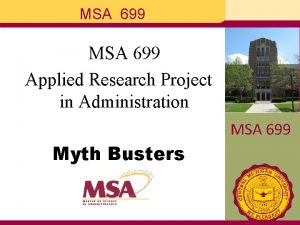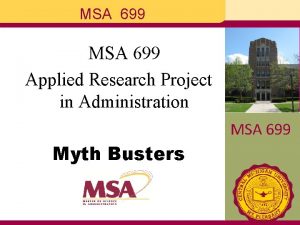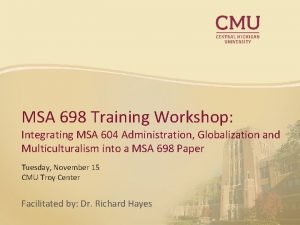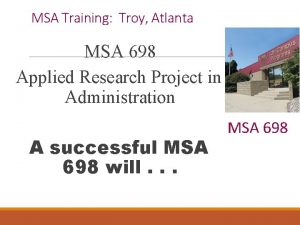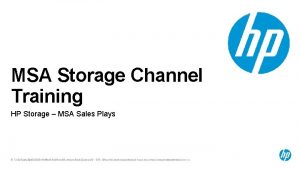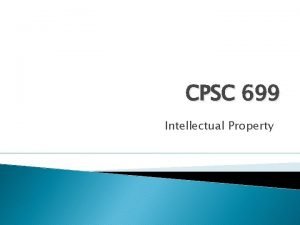WELCOME TO MSA 699 TECHNICAL SUPPORT For more




















- Slides: 20

WELCOME TO MSA 699 TECHNICAL SUPPORT: For more information, go to the tutorial at http: //www. cmich. edu/academics/off_campus_online/Bb_CMU/Student_Tutorials/Pages/defaul t. aspx Problems with Collaborate set up or your technology? Call the CMU IT Help Desk 1 -800 -950 -1144 extension 3662 or 989 -774 -3662.

INTRODUCTION - OVERVIEW • Capstone brings together all course learnings. • Demonstrate critical thinking and application. • Complete primary analysis of data • Descriptive or inferential statistics • Can be financial analysis.

INTRODUCTION cont’d • KISS method [e. g. , focused data collection, not multiple venues unless absolutely necessary]. • Formulate testable research questions [not objectives] and then answer them from the data. • This is the first of two ALL-students chats for this course. Both will be archived. • A separate one-on-one chat session will be scheduled.

INTRODUCTION cont’d • RRA process provides institutional approval. Must include RRA form. When not using publicly available secondary data, will include organizational permission letter, data collection form [e. g. , survey, with separate CMU consent letter]. See Part 2 of Student Guide. ALL must do. • You must receive approval email message from Main Campus before collecting primary data. https: //www. cmich. edu/colleges/cgs/GSMasterof. Sciencein. A dministration/GSThe. Department/Pages/Research_Review. aspx

INTRODUCTION cont’d • IRB is other institutional approval option. Less likely to be used. • Post course materials to Black. Board, except for RRA package which may be sent to my personal email.

INTRODUCTION cont’d • Pay attention to course schedule to assure timely grading for final grade submission. Target 14 days before course ends [July 31, 2015]. • Needs to be related to your area of concentration. • Note that there are 2 Parts to this course. In Part 1 we work together to reach agreement on what you are doing. In Part 2, you implement the agreement and finalize your research effort.

INTRODUCTION cont’d • Incomplete grade is possible for an extension until November 4, 2015 if 50% of course requirements are met. No extension beyond that. • See two examples of reports in my collection at Global Campus Library Service [GCLS].

WRITING CONSIDERATIONS • Write at the graduate level • Follow Student Guide for the MSA 699 Capstone Project for content, format, etc. This is a no-brainer!!!!

WRITING CONSIDERATIONS cont’d • Strive for APA compliance, especially in-text reference citing. Use reference citing software in Word. • Support ALL factual statements in ALL chapters with an in-text APA compliant reference.

WRITING CONSIDERATIONS cont’d • Report title MUST identify one of seven research typologies from Student Guide. E. G. , “A Program Evaluation of…. ”. This communicates your direction to yourself and your first and second readers, establishes an expectation for content, and increases likelihood of success [a. k. a. , higher grade]. • Chapters’ content MUST consolidate sections from chosen typology and 5 standard academic chapters. See the matrix and typology outlines in course materials.

CHAPTER INSIGHTS Discussion of Frontpieces • Executive summary [not to exceed 2 pages; often written last]. • Title page with conforming title, etc. • Table of contents, tables, etc.

CHAPTER INSIGHTS cont’d Discussion of Ch 1 contents • Tell general story • State specific, testable research questions • Cite literature • Pagination

CHAPTER INSIGHTS cont’d Discussion of Ch 2 contents • Must identify issues/variables, not critique articles. • Hint: link directly to specific, testable research questions from Ch 1. • Use section headers to identify issues/variables and focus reader’s attention. • Discuss what others have found in your subject area. • Discuss how others have conducted research in your subject area [direct tie to Ch 3].

CHAPTER INSIGHTS cont’d Discussion of Ch 3 contents • Discuss variables from Ch 2. • Specifically indicate how you will answer your stated research questions. • Identify what statistical analysis you will use for EACH data element to be analyzed [with stats text reference]. • Indicate any decision points necessary. • Cite reference from stats book.

CHAPTER INSIGHTS cont’d Discussion of Ch 4 contents • In-depth discussion of the results of your data analysis. • Specific results from the analysis for each stated research question. Discussion of Ch 5 contents • Summary, conclusions and recommendations as drawn from the literature review and your data analysis [DO NOT introduce new literature here].

CHAPTER INSIGHTS cont’d Discussion of Appendices contents • Data collection instruments [survey, consent letter, etc. ] • Raw data in table format • Collection of all responses to open-ended survey questions.

HICCUPS • Inability to get written organizational permission to access data/resources. • Failure to follow specifications of Student Guide, including identifying one of 7 research typologies in report title and follow the associated research typology. • Lack of advanced detailed planning for completing primary analysis of primary or secondary data. • Failure to link research to area of concentration.

COURSE OPERATIONAL PLAN • See Timetable in course materials. Staged for successful completion. • Continuing communications and negotiation in Discussion Forums. • One Collaborate chat [TBD] to answer individual questions and assess progress.

RESULT Over the last two years: • Student awareness of grading rubric. • Through continued interaction, a better product [85% achieve a grade between A and B-] and a higher completion rate [90 -95% of my students complete this course]. • Recognize that the student is ultimately responsible for meeting the course requirements and completion in a timely manner [course ends August 14, 2015].

TIME FOR QUESTIONS
 Lirik lagu more more more we praise you
Lirik lagu more more more we praise you More more more i want more more more more we praise you
More more more i want more more more more we praise you Am artinya
Am artinya A gas has a pressure of 699 mmhg at 40
A gas has a pressure of 699 mmhg at 40 Jika log 5 = 0 699 nilai log 20 adalah
Jika log 5 = 0 699 nilai log 20 adalah Eet speaking test sample question
Eet speaking test sample question 699/2004
699/2004 Jika log 2= 0 301 nilai log 0 16 adalah
Jika log 2= 0 301 nilai log 0 16 adalah 600-699 dewey decimal system
600-699 dewey decimal system Yüze yuvarlama
Yüze yuvarlama Jika log 3=0 477 dan log 5=0 699 maka log 45 adalah
Jika log 3=0 477 dan log 5=0 699 maka log 45 adalah 000-099 dewey decimal system
000-099 dewey decimal system Log 3 = 0 477 dan log 2 = 0 301 nilai log 18 =
Log 3 = 0 477 dan log 2 = 0 301 nilai log 18 = Ibm technical support
Ibm technical support Cisco ios upgrade planner tool
Cisco ios upgrade planner tool A guide to it technical support
A guide to it technical support Multilingual technical support
Multilingual technical support Technical services support cloud computing
Technical services support cloud computing System galaxy tech support
System galaxy tech support Inside laptop
Inside laptop Welcome welcome this is our christmas story
Welcome welcome this is our christmas story



